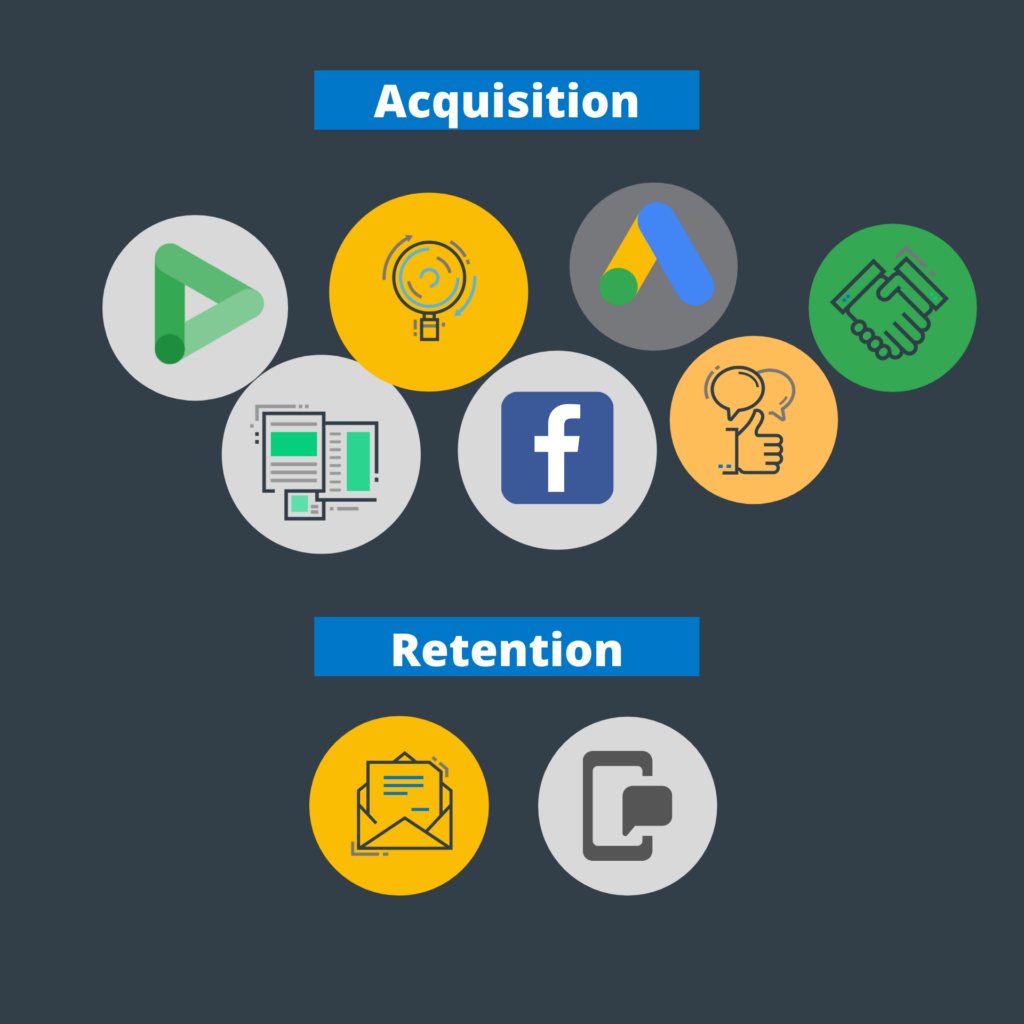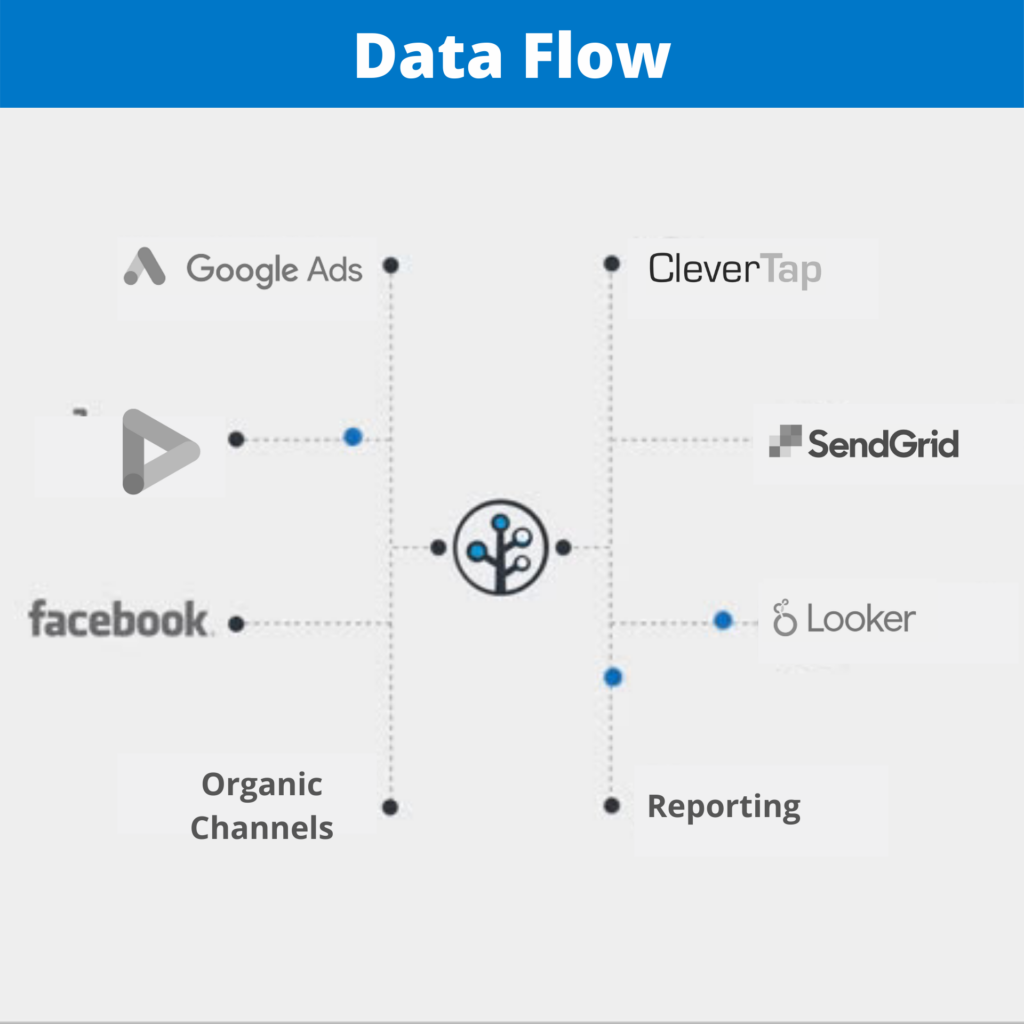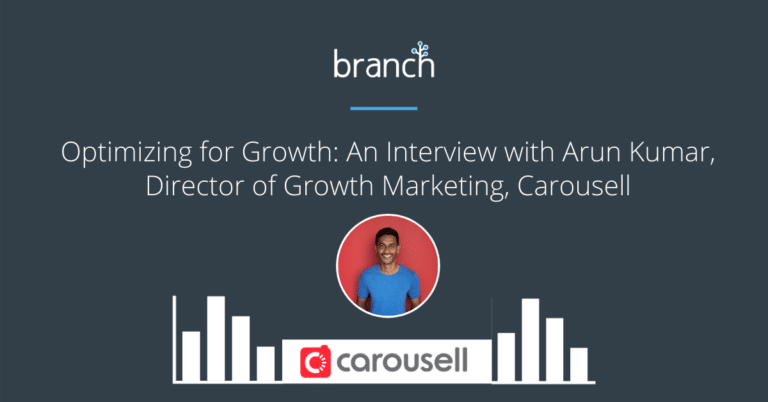In this edition of mobile growth interviews, we speak with Arun Kumar, Director of Growth Marketing at Carousell since 2015, where he built the growth marketing team and has since been overseeing Carousell’s user acquisition and retention efforts.
Before joining Carousell, Arun was at Zalora, where he spent 3.5 years heading up their social and mobile marketing teams. He is passionate about data and finding new ways of using it to solve problems.
Shuxian Huang: Hello Arun, could you tell us a bit about yourself?
Arun Kumar: I’ve been with Carousell for over 5 years now and I lead the growth marketing functions, namely SEO, CRM, and performance marketing, and manage the Indonesia and Taiwan markets too.
SH: What channels are you leveraging for growth and retention at the moment?
AK: On the acquisition side, we mainly rely on paid channels (Google, Programmatic, Facebook) and SEO tactics to drive more traffic to our web and app. We also use Branch tech to help convert web and referral traffic into new app users, and measure and deep link paid traffic.
On the retention front, we rely on push and email channels to keep users engaged. We use Clevertap for the marketing automation piece while relying on our internal recommendations engine to power content. We are also careful to ensure our users are transitioned seamlessly as they interact with our brand on different channels and platforms, and for that we rely on Branch to power our user experiences from for example, email to app.

SH: Carousell is digital first, can you tell us a bit about your Marketing technology stack? How do they fit together?
AK:
CRM: Clevertap + Sendgrid
Programmatic: DV360
Data: Looker
Attribution/deep linking/web journeys: Branch
We use Branch deep linking to measure in-app campaigns as well. This allows us to build a more complete click-chain at a user level across paid, marketing, and organic channels, and in turn allows us to build our multi-touch attribution models across channels at a user level.

SH: How do you balance cost, features, building your own tools & future use cases for your marketing strategy?
AK: Simply put – ultimately, the cost of building on our own should not exceed the cost of procuring a tool. While making that cost-benefit analysis, the cost of maintaining internal tools should also be taken into consideration. Take our partnership with Branch for example, (1) it will be first and foremost, very difficult to build our own marketing attribution tool and maintain it, (2) same goes for deep linking capabilities as there are so many edge cases to be careful of.
SH: How important is support from those providers?
AK: Support is a critical aspect of working with solution providers. Given the ever-changing environment in which we operate – marketing tech and how you reach users is constantly evolving. I’m not sure if most companies have the time or the resources to keep up with all these changes, so it’s important to have support from partners whom you can rely on to be at the forefront. Support comes in two forms, upgrading tech to keep up with the changes and educating us on changes – both of which are very important for us to drive excellence for our users.
SH: Who is using external tools in your team?
AK: Everyone in my team uses at least one external tool. My team is also directly responsible for working with the product and data teams to enhance marketing tracking capabilities to support other marketing functions.
Our CRM team heavily uses CleverTap and its integration with Branch for creating seamless user experiences and downstream events attribution. Transactional emails have also been updated with Branch links leverage the high volume of clicks we get from there to drive as many users into the app where possible.
The acquisition team leverages Branch links in our campaigns for experience & measurement purposes.
Branch journey banners also cover a key touchpoint to drive awareness of our app or new categories to visitors on our mobile web as well as drive existing app users who land on mobile web through Google Search back into the app.
The acquisition team regularly optimises the Smart web banners on our mobile web now to drive more app users who get a better experience with deferred deep linking, i.e. landing on the same content in-app that they first saw.
The regional marketing team now uses Branch links for on-site campaigns so that we can build a click-chain across paid and owned channels to feed a cross channel attribution model.
Data from Branch is then visualised in looker for reporting and supporting other marketing functions – this is done by our Marketing & BI folks.

SH: Because we cannot avoid a COVID question, do you see this as a drawback or opportunity?
AK: There have been both drawbacks and opportunities since COVID spread around our markets. At the height of it, we saw buying and selling behaviours peak as people were looking for more items locally with global supply chains being disrupted. At the same time, government initiatives such as movement control measures and circuit breakers affected the buying and selling when local shipping services were disrupted, or when buyers and sellers could not meet to transact. The latter affected our cars and property categories that mainly serve car dealers and property agents.
SH: What should a company never outsource?
AK: The core of the product and marketing strategy shouldn’t be outsourced. And to achieve growth, both of these functions should work collaboratively keeping user experience in mind. With this should come a lot of experimentation and the insights from that should keep driving growth. Things that can be outsourced is what facilitates this internal partnership between the functions.
SH: Biggest challenge at the moment?
AK: Since our users interact with us through a variety of channels and platforms, stitching user journeys is definitely something we are prioritising to ensure our users get a great experience when they come across our brand assets regardless of where they are in their journey with Carousell. At the same time, a unified source of information across web and app helps us build an even more complete view which then enables us to prioritise product support on a platform for various use cases.
SH: What marketing KPIs should CEOs always look at?
AK: From a growth perspective, KPIs should be efficiency and retention. And ultimately how growth efforts are driving return on ad spend.
SH: Is there any strategic project you’re working on to be better prepared once the economy opens up?
AK: During the pandemic, Carousell has stepped up as an essential platform across Asia. We added some new features on the product front to address the new changes and demands from the pandemic. Additionally, we really expedited our efforts and partnered with several local delivery partners like GOGOVAN, Lalamove and Grab Express to offer easy shipping solutions and discounted shipping rates that our users can take advantage of during these difficult times. This is an area that we will continue to work on and improve.
Our community has always been our biggest strength. Despite the fear and panic buying earlier, we started to witness acts of kindness spring up on our platform. We have seen users raise donations for good causes across our markets in different resourceful ways, this shows that our app is more relevant than ever, and we will continue to keep heads down focused in serving our community.






















